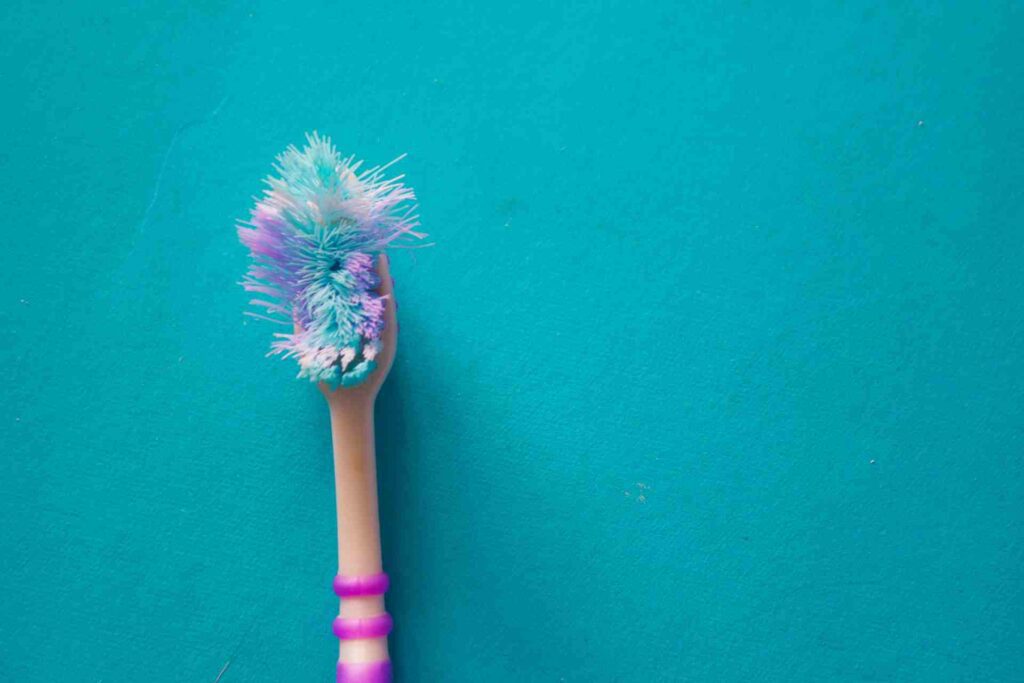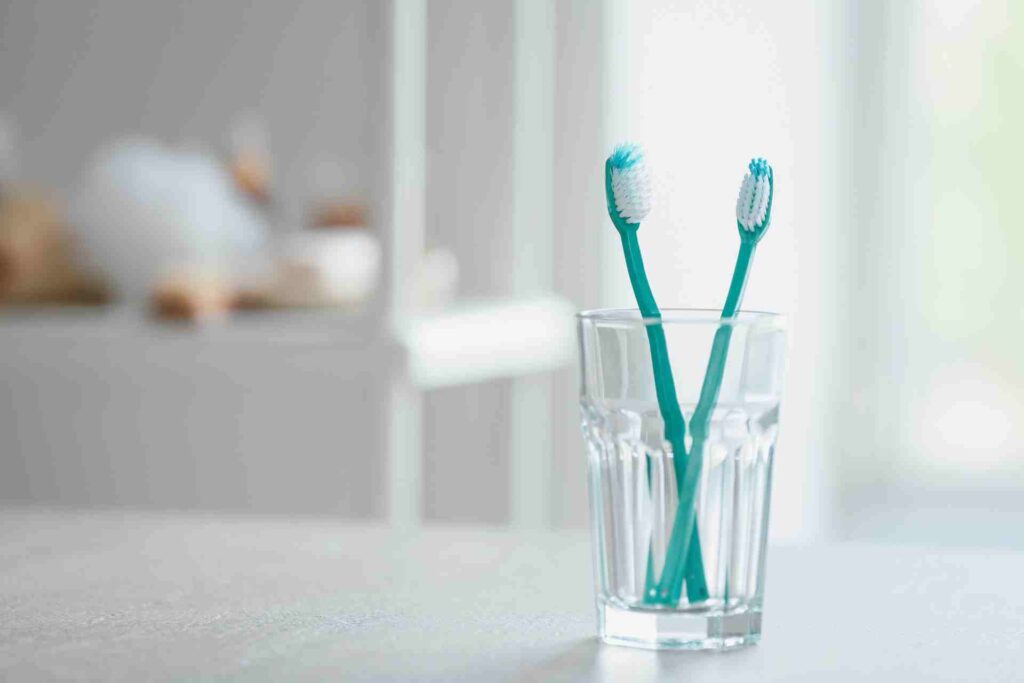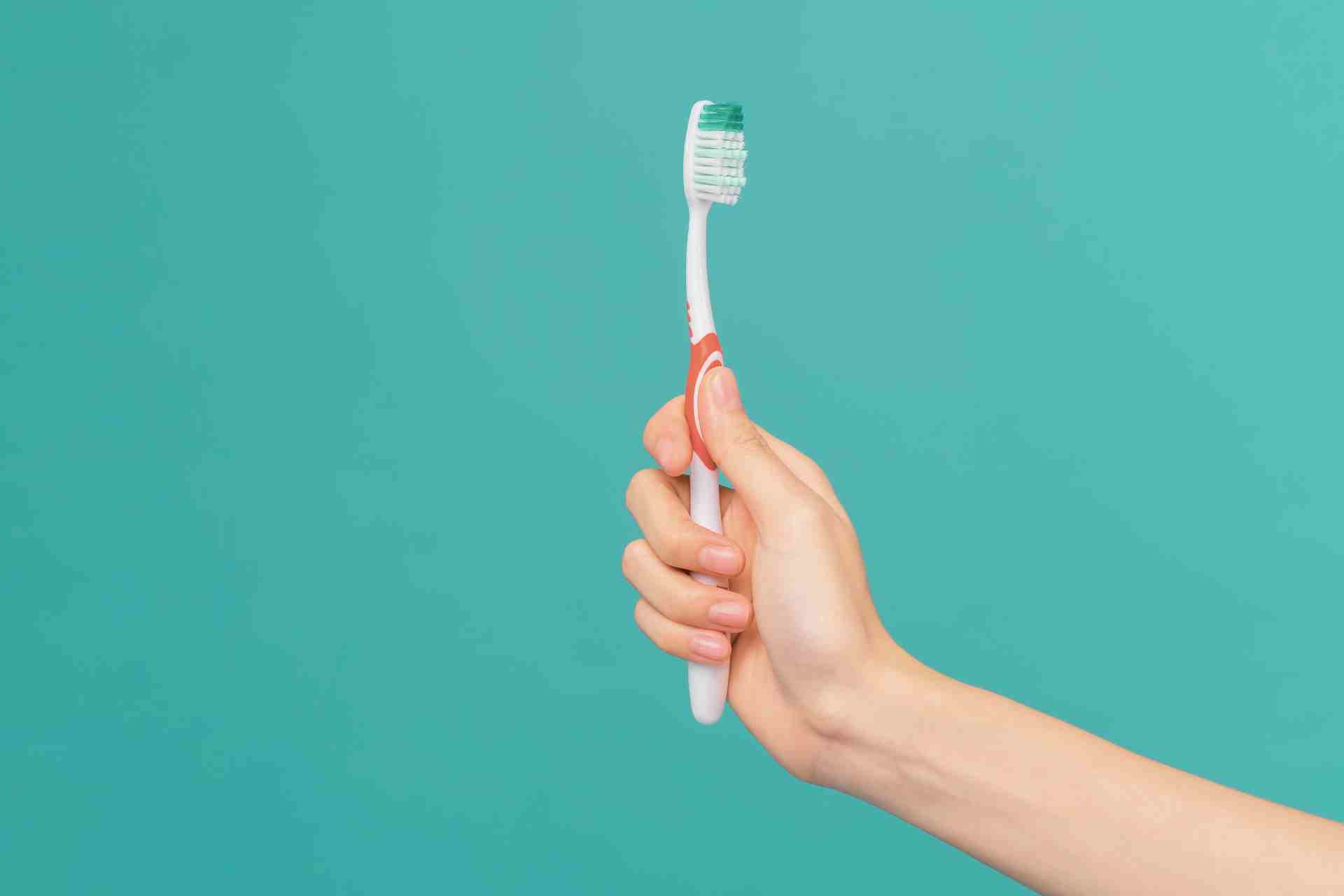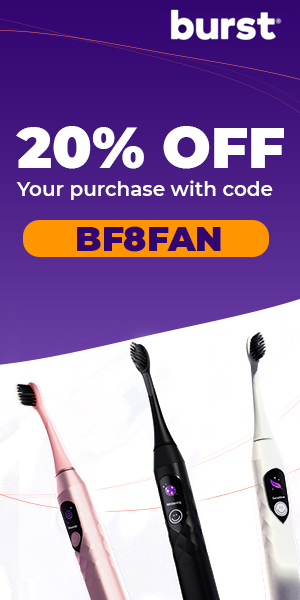Highlights:
- The American Dental Association recommends replacing your toothbrush every three to four months, or sooner if the bristles are frayed or you’ve been sick. A fresh brush helps remove plaque more effectively and supports healthier gums.
- Worn bristles don’t clean well, even if your brushing technique is perfect. One study found that heavily worn brushes left behind more plaque, even when they were only three months old.
- You don’t need to sanitize your toothbrush daily, but regular rinsing and letting it air dry upright are essential. Avoid storing it in a closed container, especially while it’s still damp.
- If you haven’t changed your toothbrush in a year, it’s time. Older brushes can collect bacteria, lose effectiveness, and may even irritate sensitive gums or contribute to bad breath.
Why This Little Habit Matters More Than You Think
When was the last time you replaced your toothbrush?
If you’re not sure, you’re probably due for a new one. Swapping out your toothbrush is one of those tiny habits that’s easy to forget, but it can have a big impact on your oral health.
A worn-out toothbrush isn’t just less effective. It can actually leave behind plaque and bacteria that your smile deserves to be free from.
The American Dental Association recommends replacing your toothbrush every three to four months. If the bristles are frayed or you’ve been under the weather recently, it’s smart to change it even sooner.
Need help choosing the right brush for your mouth, your habits, or your kids? Here’s my go-to guide on the best toothbrushes for every need.
Let’s take a closer look at why this small change matters—and how to know when it’s time for a fresh start.
How Do I Know My Toothbrush Needs Replacing?

You don’t need a microscope to tell when it’s time to let go of your toothbrush. In fact, there are a few signs that make it pretty obvious.
Here’s what to look for:
- The bristles are frayed, bent, or splayed out to the sides
- The color is fading, or the brush just looks worn down
- You notice a weird smell, or it just feels “off” when you use it
- You’ve recently been sick with a cold, flu, or another illness
Even if your brush looks mostly okay, it might not be doing its job. Bristles lose their shape and stiffness over time, which means they stop reaching the right areas and can leave plaque behind.
And if you’ve been under the weather? That’s a great time to start fresh. While the CDC says there’s no solid evidence that replacing your toothbrush prevents reinfection, many experts still recommend tossing it once you’re feeling better, just to be safe.
A new brush is such an easy win for your health, especially after being sick. Consider it part of your recovery routine.
Why Do I Need to Change My Toothbrush at Least Every 3 Months?
It’s not just about fresh bristles—it’s about giving your teeth and gums the best clean possible.
Over time, your toothbrush collects bacteria and fungi, especially if it’s stored in a damp or enclosed space. Even if you rinse it thoroughly after each use, those microorganisms can stick around.
But the bigger issue? Bristles wear out.
They lose their shape, their flexibility, and their ability to reach into tight spots between your teeth or along the gumline. And once that happens, even if your brushing technique is perfect, your brush just can’t do its job.
That’s why the American Dental Association recommends replacing your toothbrush about every three to four months. If the bristles look worn before then, swap your toothbrush out sooner.
There’s research to back this up, too. One study on toothbrush wear and effectiveness found that participants with the most worn-down brushes had more plaque, even though the brushes were only three months old. So yes, bristle shape really matters.
And if you’re not sure your brushing technique is helping or hurting your results, here’s a quick refresher on the best way to brush your teeth without overdoing it.
How Often Should You Sanitize Your Toothbrush?

Here’s the good news: you don’t need to go overboard.
For most people, a simple rinse and air-dry is all it takes to keep a toothbrush reasonably clean. After brushing, just run the bristles under water to remove any leftover toothpaste or debris. Then store it upright in an open container so it can dry out completely.
Airflow matters. Don’t keep your brush in a travel case or drawer full-time, where moisture and bacteria can build up.
If you want to give your brush a little extra care every now and then, here are a few dentist-approved ways to sanitize:
- Soak the bristles in antibacterial mouthwash or hydrogen peroxide for about 10 minutes
- Rinse well before using again
- Only use boiling or microwaving if the brush is labeled as safe for high heat; otherwise, you’ll damage the bristles
If you’re traveling, be extra mindful. Use a ventilated travel case and let your brush dry as often as possible. If that’s not an option, consider tossing your brush after the trip and starting fresh.
No need to sanitize daily. Just keep your brush dry and clean—and change it regularly—to keep your smile in great shape.
What Happens If You Don’t Change Your Toothbrush for a Year?
Let’s say you forget—or just keep putting it off. What actually happens if you go a whole year without changing your toothbrush?
To start, the bristles will likely be splayed and frayed, even if you don’t notice it right away. When that happens, your brush doesn’t clean as effectively. You’ll leave behind more plaque, which can lead to gum inflammation, cavities, and even bad breath.
And it’s not just about plaque. A year-old toothbrush can harbor bacteria, mold, and even yeast, especially if it’s been stored in a damp environment. Every time you use it, you’re reintroducing that buildup into your mouth.
If you already deal with sensitive gums or struggle with gagging when brushing, a worn-out toothbrush can make things worse. The bristles might feel scratchy, irritate your gums, or make it harder to brush thoroughly, especially around the back teeth.
A year might not sound like a long time, but in toothbrush life? It’s ancient. If it’s been that long, no shame—just grab a new one today. Your mouth will thank you.

Key Takeaways
- Replace your toothbrush every 3 months, or sooner if the bristles look frayed
- Swap it out after you’ve been sick, especially after flu or colds
- Worn bristles = less effective cleaning and more plaque buildup
- Don’t store your toothbrush in a closed container—let it air dry
- Daily rinsing is enough, but occasional sanitizing can help
- A fresh toothbrush supports healthier gums, better breath, and cleaner teeth
- Don’t skip flossing—it removes buildup that your brush can’t reach
Frequently Asked Questions
Do I really need to replace my toothbrush every 3 months?
Yes. Bristles wear out with use, and when they do, they can’t clean your teeth as effectively. The ADA recommends replacing your toothbrush every 3 to 4 months—or sooner if the bristles are visibly worn.
Can I use the same toothbrush for 2 years?
Technically, yes. But practically? Not a good idea. You’ll end up brushing with worn, flattened bristles that can’t remove plaque properly, and you may be spreading around old bacteria, too.
How often do dentists recommend you change your toothbrush?
Most dentists stick to the ADA’s three-month rule, or they’ll tell you to change it sooner if you’ve been sick or your brush looks past its prime.
What happens if you don’t change your toothbrush regularly?
Plaque builds up, gums can get irritated, and your brushing becomes less effective. Over time, it can increase your risk for cavities, gum disease, and bad breath.
Is it OK to miss one toothbrush change?
It happens—life gets busy. But if you regularly wait 5 or 6 months between new brushes, you’re not getting the full benefit of brushing. Aim for consistency.
How often should you floss?
At least once a day. Flossing removes plaque and food between your teeth that your brush can’t reach. It’s key for preventing gum disease, reducing inflammation, and keeping your breath fresh.





















